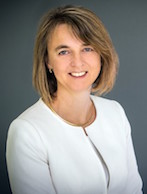Association News: Dr. Helen Sanders gives history and predicts future of electrochromic glazing market
Posted on June 16th, 2016 by Heather West
 Participants at the American Architectural Manufacturers Association (AAMA) 2016 Summer Conference heard about the past, present and future of the electrochromic (EC) glazing market, thanks to a presentation by Dr. Helen Sanders. Sanders leads technical development and training for Sage Electrochromics. Additionally, she contributed in large ways to the industry's recently created Window Product Category Rule.
Participants at the American Architectural Manufacturers Association (AAMA) 2016 Summer Conference heard about the past, present and future of the electrochromic (EC) glazing market, thanks to a presentation by Dr. Helen Sanders. Sanders leads technical development and training for Sage Electrochromics. Additionally, she contributed in large ways to the industry's recently created Window Product Category Rule.
Sanders's presentation, "Electrochromic Glazing: State of the Art, State of the Market, compared the research and development in EC technology from 1989 up to the present day. Some important aspects of the technology, she said, include its durability, high performance, ability to fit into existing window products and long-term potential. The technology gained momentum 2003, when a U.S. Department of Energy commercial building evaluation was done, as well as a residential one. The next year, production on the first EC facility began, and in 2005, EC glass made its debut at the International Builders Show.
In 2006, the first shipments from the production facility went out. Key markets and different applications were targeted. Early proof points in different installation projects were successful, and big projects around the world in different types of buildings had been tested by 2010.
"We were ready to scale up again," said Sanders.
EC products were limited in exterior color, substrate and size until 2012. The price was relatively high. However, after 2012, there were market changing product developments in size and aesthetics. Enhancements at that time included non-rectangular shapes and improved tinted state. Changes in coating and optical tuning layer on exterior ply allowed architects to have any exterior color they wanted. Aesthetic flexibility made a big difference in terms of market adoption, all around the world.
"We also reduced the visible light transmission because two percent wasn't cutting it," said Sanders. "In-pane zoning was a change, too, which lets you control glare, while also allowing for daylight admission."
But what about price? Sanders said electrochromic glazing is within reach.
"In 2012, we hit the point where upfront costs were comparable to those of conventional solutions," she said.
Sanders added that Sage is seeing larger EC order sizes and more volume in general, and in more diverse applications."
"People know about EC now," she said. "Architects want it. The focus on human comfort helps drive it."
But where is EC on the adoption life cycle?
"We're getting out of the early adopters and into the early majority," said Sanders. "It took low-e 30 years to get adopted into the market, so it takes time."
However, she said, EC and green living should not be waved off as phases.
"Sustainability of the planet isn't going away," she reminded participants. "We spend 90 percent of our time indoors, so we want to focus on indoor air and environmental quality."
For the future of EC specifically, Sanders called for more projects using more than 100,000-square-feet of EC glass, as well as further volume expansions and new entries to the market.
###
Filed under: Events, FGIA, Products
